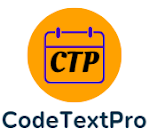What is a resume?
Also known an as job resume, a resume is a brief written summary of a job applicant’s past employment history, education, and other pertinent information. The term resume is used primarily in America, where it has taken the place of the Latin expression curriculum vitae, or CV.
How are resumes used?
Resumes are used to make a favorable impression on a prospective employer. Your resume is often the first impression a potential employer has of you. For this reason, it is often referred to as one of the most crucial steps taken during a job search.
Why is a resume important?
Without a favorable initial impression, a prospective employer is likely to stop considering you as a suitable candidate for the job on offer and move on to other candidates who have provided better resumes. Think of a resume as a tool for marketing yourself. It’s more than just a document: It outlines your background, your skills, and your education so that a potential employer is quickly and easily able to see how your individual experiences can contribute to a company’s success.
Interesting facts about Resumes:
The average time spent by recruitment managers for analyzing a resume is 5 to 7 seconds.
Unprofessional email addresses are the reason for rejection of 76% of resumes.
When you put a photo on a resume the chances of getting discarded are up to 88%.
A resume serves two purposes: for the Candidate, it is a Marketing Tool; for the Employer, it is a Screening Tool.
Must follow important to less imp.
Must follow data sharing from recent to past
Must be undersigned and dated without which it is treated as waste paper.
This is an objective based document.
It needs to be a simple, precise and short document not more than two pages.
Unnecessary bolds,capitals,lines,underlines,margins,designs,table,bullets,numbering etc must be avoided.
The mentioned data must have adequate testimonials to prove them.
Remember CV and a Resume is not one and the same things.
Simple language is expected without any spelling, grammar and construction error.
90 % of the HR round questions are asked from the resume itself.
Give your resume a professional look
Recruiters often have to review hundreds of resumes at a time. The last thing you want to do is make it harder for them to read yours so make your resume easy to read by using:
Common font styles: Times Roman and similar
A font size between 12
Appropriate and uniform spacing
No more than six bullet points when highlighting experience, education, and skills
Margins at 1” all around
Left Aligned format (Justified is also acceptable)
Remember that resumes are also a stellar opportunity to brand yourself professionally. You can accomplish this in small ways; try describing yourself with adjectives that show off your professional personality, like “driven,” “passionate,” and “enthusiastic.”
*Click here to download professional resume
Also known an as job resume, a resume is a brief written summary of a job applicant’s past employment history, education, and other pertinent information. The term resume is used primarily in America, where it has taken the place of the Latin expression curriculum vitae, or CV.
How are resumes used?
Resumes are used to make a favorable impression on a prospective employer. Your resume is often the first impression a potential employer has of you. For this reason, it is often referred to as one of the most crucial steps taken during a job search.
Why is a resume important?
Without a favorable initial impression, a prospective employer is likely to stop considering you as a suitable candidate for the job on offer and move on to other candidates who have provided better resumes. Think of a resume as a tool for marketing yourself. It’s more than just a document: It outlines your background, your skills, and your education so that a potential employer is quickly and easily able to see how your individual experiences can contribute to a company’s success.
Interesting facts about Resumes:
The average time spent by recruitment managers for analyzing a resume is 5 to 7 seconds.
Unprofessional email addresses are the reason for rejection of 76% of resumes.
When you put a photo on a resume the chances of getting discarded are up to 88%.
A resume serves two purposes: for the Candidate, it is a Marketing Tool; for the Employer, it is a Screening Tool.
Must follow important to less imp.
Must follow data sharing from recent to past
Must be undersigned and dated without which it is treated as waste paper.
This is an objective based document.
It needs to be a simple, precise and short document not more than two pages.
Unnecessary bolds,capitals,lines,underlines,margins,designs,table,bullets,numbering etc must be avoided.
The mentioned data must have adequate testimonials to prove them.
Remember CV and a Resume is not one and the same things.
Simple language is expected without any spelling, grammar and construction error.
90 % of the HR round questions are asked from the resume itself.
Give your resume a professional look
Recruiters often have to review hundreds of resumes at a time. The last thing you want to do is make it harder for them to read yours so make your resume easy to read by using:
Common font styles: Times Roman and similar
A font size between 12
Appropriate and uniform spacing
No more than six bullet points when highlighting experience, education, and skills
Margins at 1” all around
Left Aligned format (Justified is also acceptable)
Remember that resumes are also a stellar opportunity to brand yourself professionally. You can accomplish this in small ways; try describing yourself with adjectives that show off your professional personality, like “driven,” “passionate,” and “enthusiastic.”
*Click here to download professional resume







2 Comments
9FBE7ACD2C
ReplyDeleteTakipçi Satın Al
M3u Listesi
Erasmus
Kafa Topu Elmas Kodu
Roblox Şarkı Kodları
43F5158EBE
ReplyDeleteGörüntülü Sex
Görüntülü Show
Whatsapp Görüntülü Show